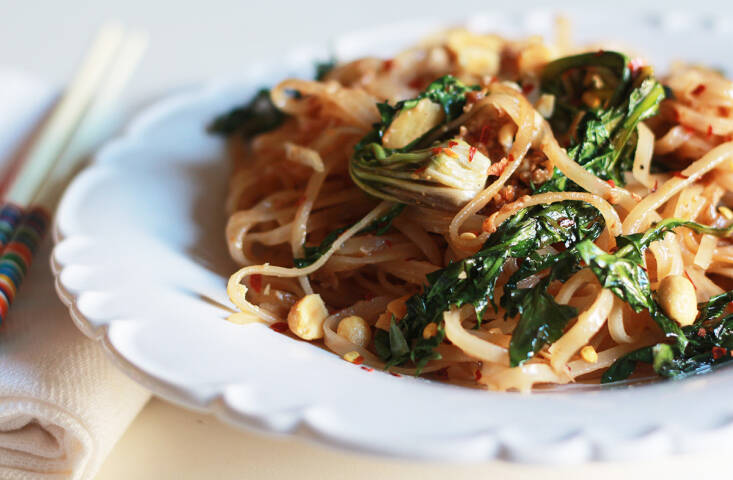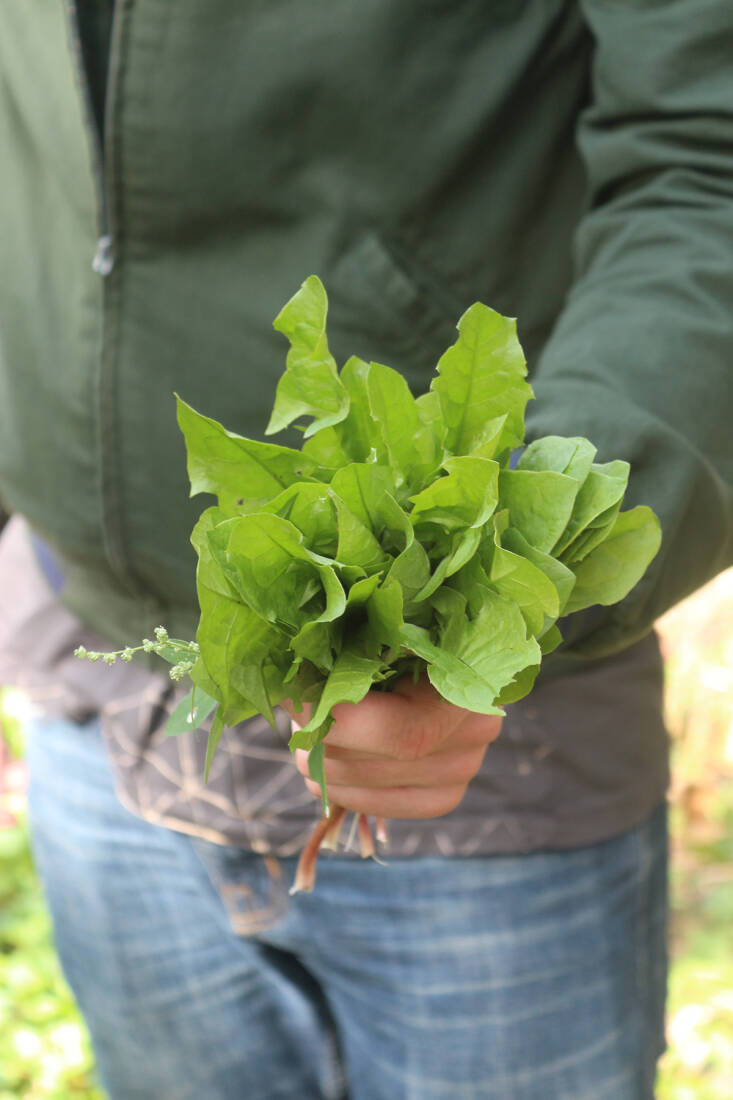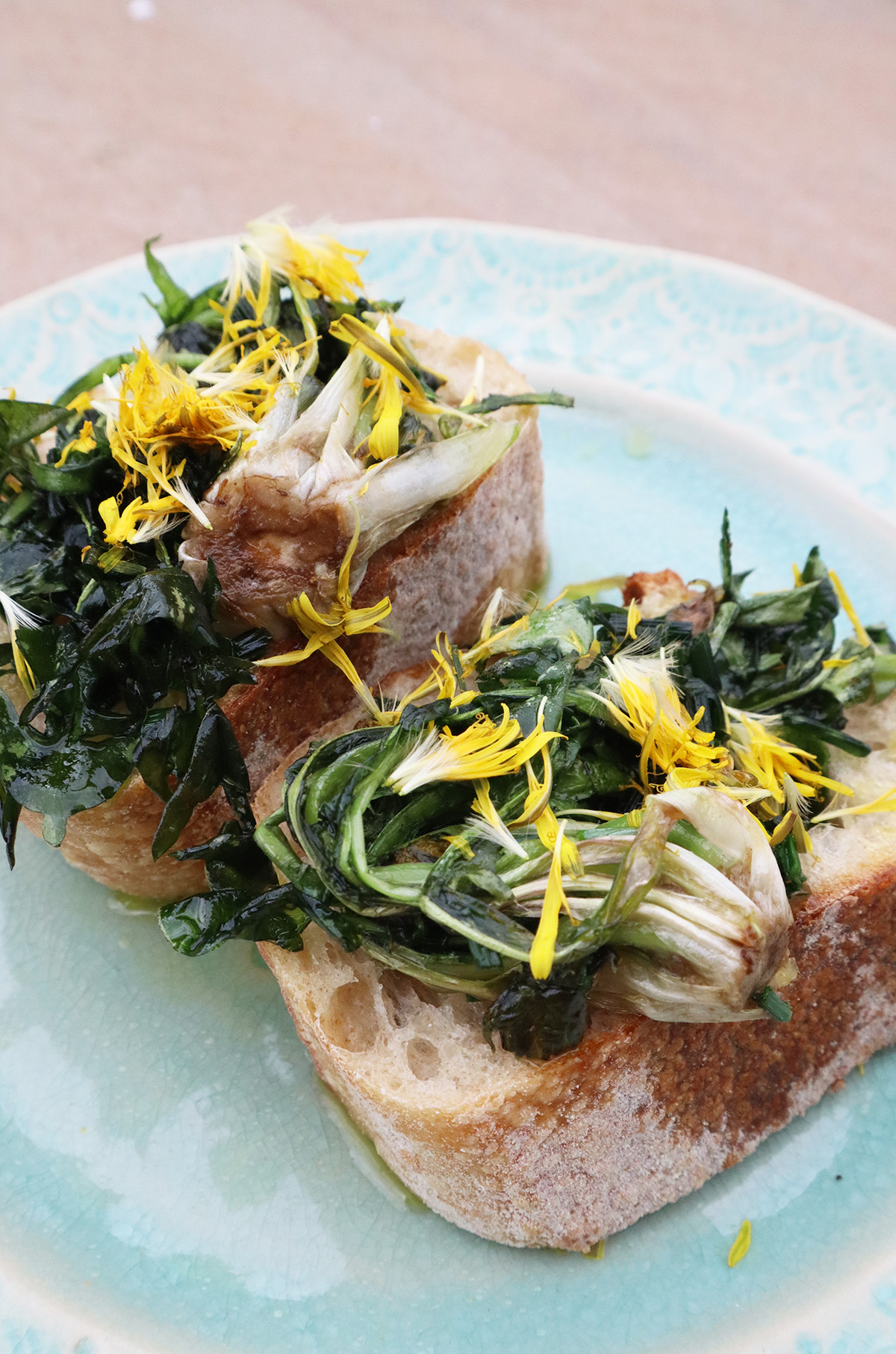Delicious Served as a Wilted Side or in a Salad
Seen through the critical lens of weeds, dandelions are perhaps the most familiar nuisance plant of all. Seen through the appreciative lens of food, they are a welcome and fresh spring ingredient. You don’t have to be a forager to recognize the new, lion-toothed leaves (dent-de-lion is the French etymology) emerging from their overwintering crowns in spring. A few weeks later, dandelions’ bright flowers, rayed like miniature suns, set fields, lawns, and path edges ablaze. Soon, their silky parachute-seeds drift off—the threat (or promise) of more.
Instead of reaching for the Roundup, let’s rewind, rewild, and re-set our dandelion clocks to appreciate this useful plant.
Photography by Marie Viljoen.
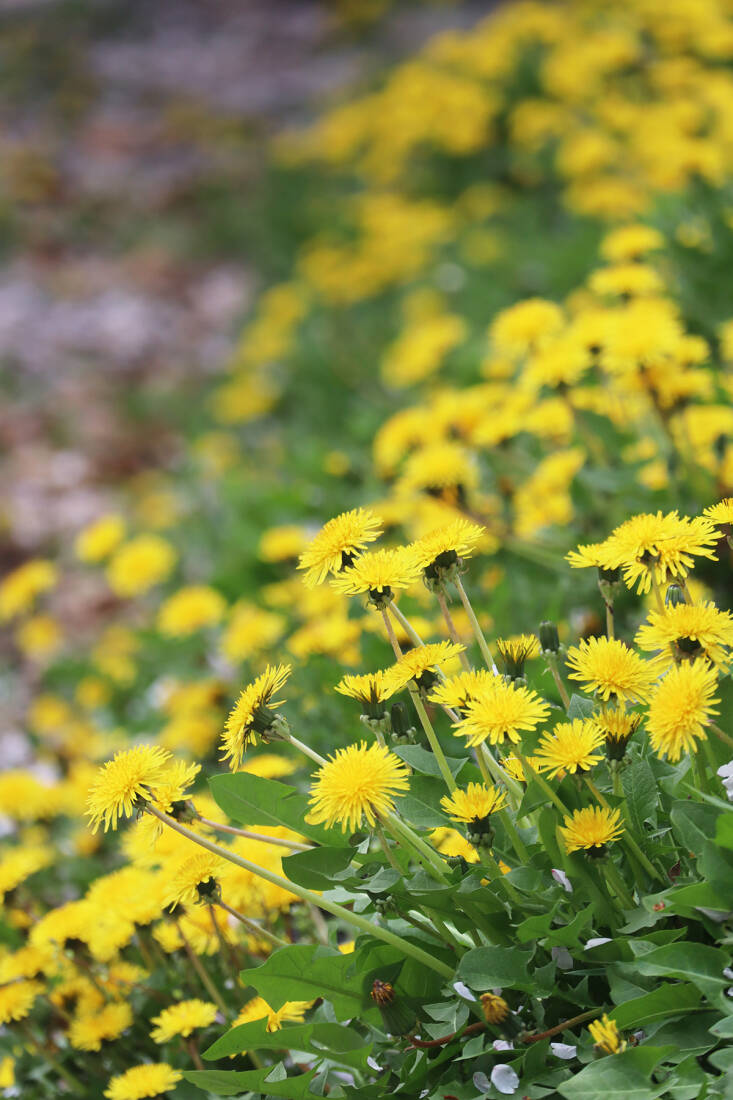
Dandelions are one of the bitter herbs of Passover, and in Gaza today, dandelions, along with other hardy “weeds” like common mallow, feed the hungry. An edible plant valued at least since the Ancients ate them as a tonic, dandelions are associated with a solid repertoire of traditional recipes. Dive into cookbooks and websites from countries ranged around the Mediterranean and the Middle East, and you will find them on plates of wilted greens annointed with olive oil and caramelized onions, in yeasted pies and meaty stews, and in reassuringly simple salads.
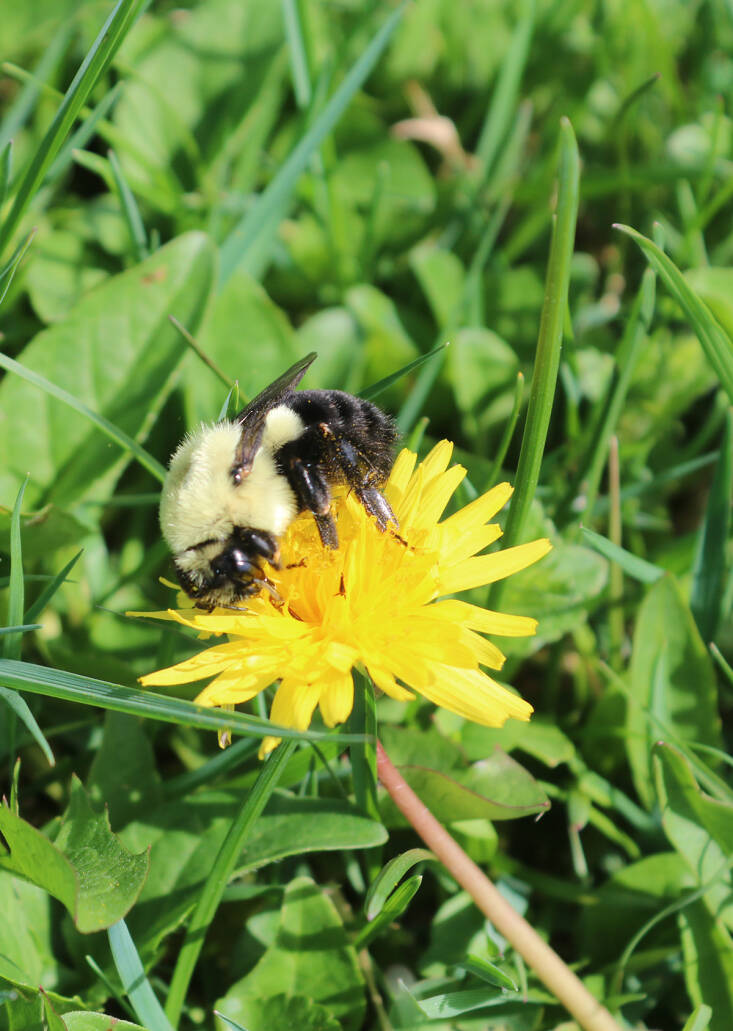
A bee-friendly PSA: While dandelions are good to eat if you are human, their flowers are also a boon to bees. Their bloom time varies according to regional seasonal differences, so consider not mowing your lawn (and lobby your local municipality or park not to mow either) when they bloom in your area.
Lean more about No-Mow May at Bee City USA.
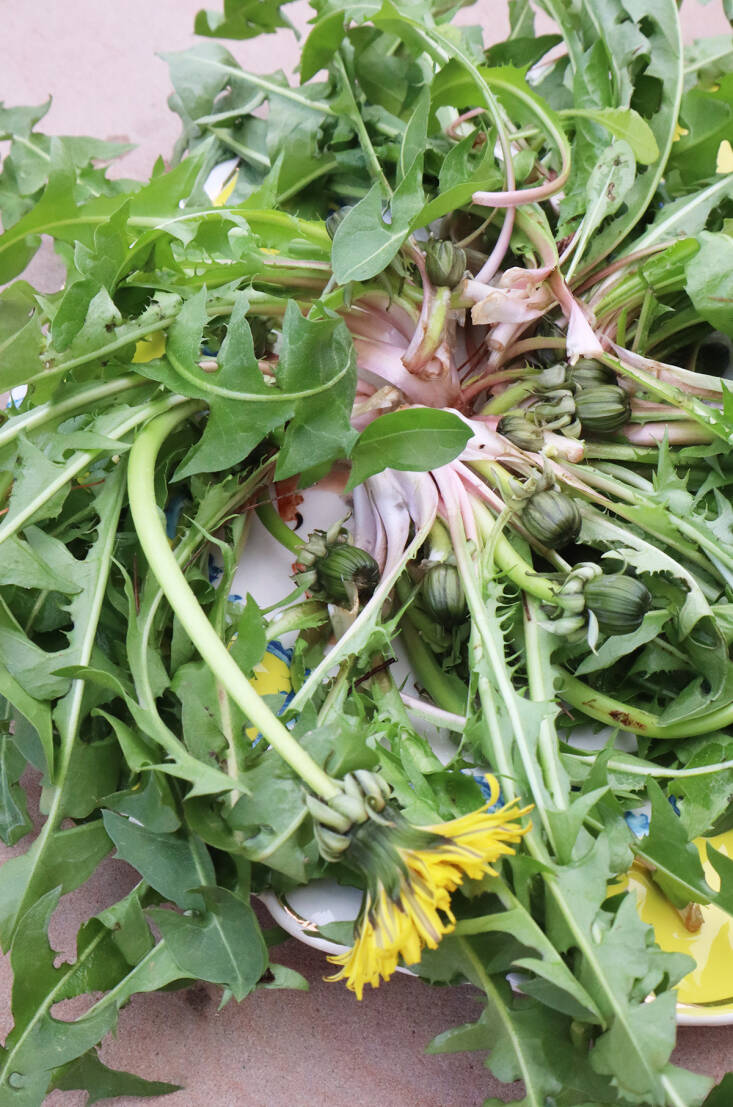
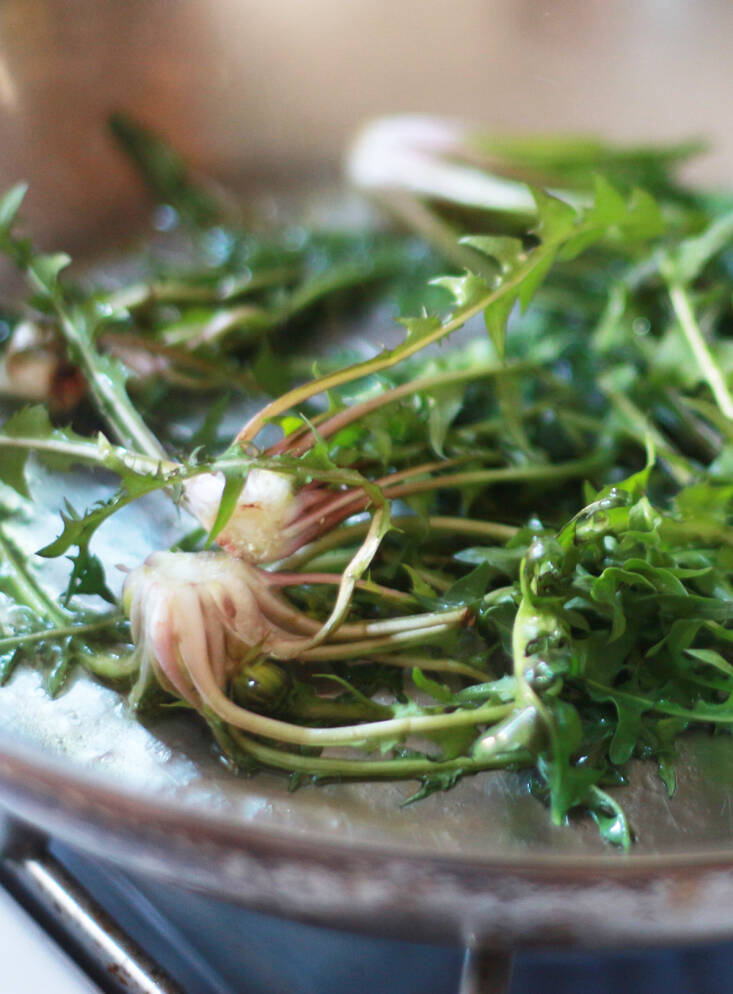
Early spring’s dandelion crowns are the whole basal rosette of the plant, sliced just above the root. Harvested before the more uncompromising bitterness of the mature leaves has developed, the crowns are a crunchy and mild vegetable, and succulent treat.
While the crowns can be eaten raw in salads, they are also easy to wilt entire in a pan of warm oil. My favorite spring snack is a quick cicchetti-like bite of sautéed dandelions atop good bread, with some field garlic to add a pungent bite. They can also be added whole to familiar dishes from almost any culinary genre: East Asian noodle bowls, Southeast Asian-style curries, Italian-inspired spaghetti (with bottarga), Senegalese maafe, South African bredies. Willing, and wilted, the dandelions add an additional layer of flavor to any of these meals, along with a healthy dose of minerals and antioxidants.
